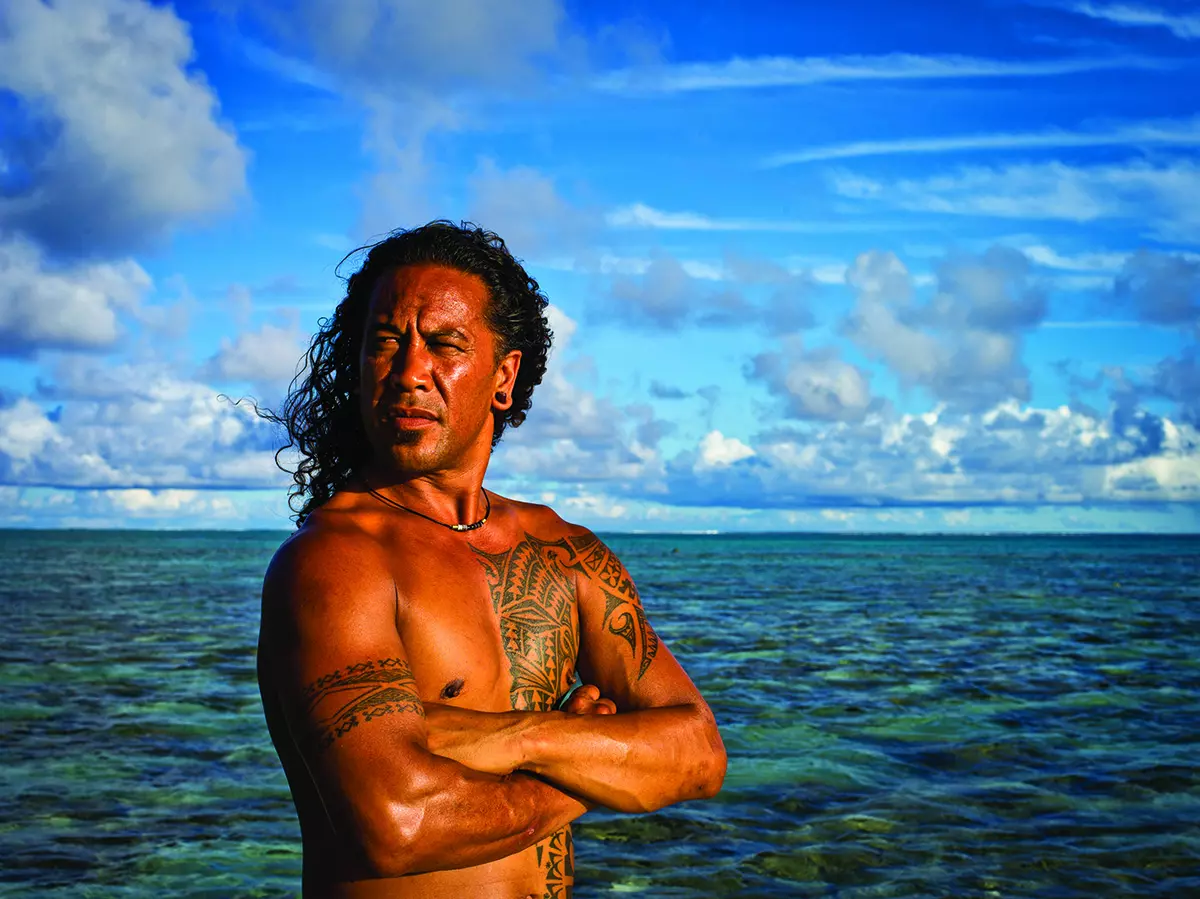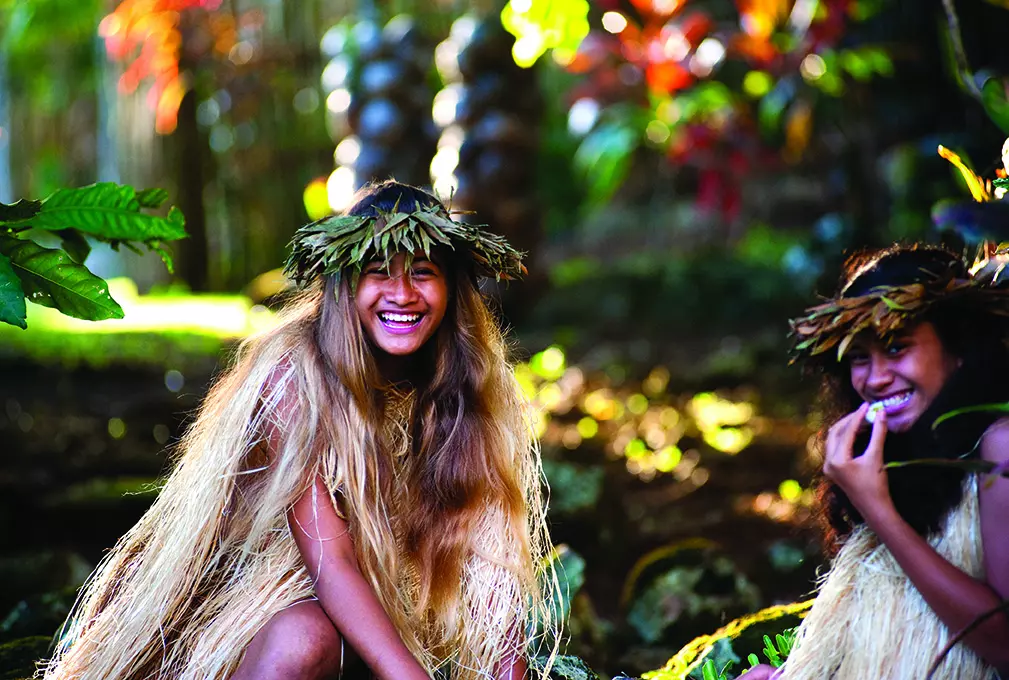- DISCOVER - Aitutaki
Aitutakians believe they are descended from Ru, the famous seafaring warrior who arrived from Avaiki, the legendary homeland of the early Polynesians, on a double-hulled canoe. Ru settled in Aitutaki with his four wives, attendants of warriors and beautiful maidens of noble birth.
History plays a vital part in island life. And following the Maori migration, apart from a stopover from the Spanish explorers Alvaro de Mendana sighting Pukapuka in 1595 and Pedro Fernandez de Quiros sighting Rakahanga in 1606, all remained pretty quiet until some 160 years later in 1773 when the infamous Captain James Cook sighted Manuae atoll and then Palmerston, Takutea, Mangaia and Atiu (a bird watchers blissful haven) in 1777.
Explorers following however left a somewhat less tranquil wake – the highly questionable Captain William Bligh first sighted Aitutaki – probably the most glorious of all the islands – in 1789 and hot on his heels after the bloody Mutiny on the Bounty, that buccaneer Fletcher Christian sailing in Bligh’s very own vessel, sighted Rarotonga.
Fortunately Aitutaki – and its stunning beauty survived this wake of bloodthirsty sailors. These days it is recognised for its romantic aura rather than tales of swashbucklers. And is highly sought by honeymooners and couples seeking the most memorable wedding possible. A betrothal against a brilliant sunset on a desert island can turn from dream to reality on this magical island paradise. Less than an hour’s flight away by local airline Air Rarotonga lies the alluring atoll. Nicknamed Honeymoon Island – for obvious reasons, it is the archetypal tropical island. Even the most travel weary cannot fail to wonder at this Eden with its vast crystal clear lagoon, scattered with tiny motus of the finest white sand where sea birds and land lovers seek sanctuary.


Aitutakians believe they are descended from Ru, the famous seafaring warrior who sailed from Avaiki, the legendary homeland of the early Polynesians and settled here with his four wives, and attendants of warriors and beautiful maidens of noble birth landed in a double hulled canoe. Arriving at full moon he was captivated by its reflection in the vast tranquil lagoon and named his landing point O’otu – full moon. Legends like this abound and fascinate, emanating from visits to the marae where volcanic boulders in distinctive formation marked the sacred ceremonial grounds of their forefathers. There’s a legend that relates Maungapu, the highest hill on the very flat island used to once be the Raemaru Peak in Rarotonga and victorious warriors carried it off after a fierce fight. Whatever you believe, the view from here reveals a spectacular array of technicolour fish which can be seen in close up by taking a Bishop’s Cruise (an experience in itself – the Aitutakians aptitude for song and dance and storytelling comes to the fore with a captive audience of sightseers.) Get your passport stamped on One Foot Island – step onto the first landing for the flying boats that flew the original Coral Route, go snorkelling in the clearest waters ever seen or simply spend a few hours slipping from sand to sea. A day spent hopping from the pure white motus sprinkled around the lagoon is one of life’s great memories. And put the experience of bone fishing top of that list.
A yachties’ hideaway, the white sails can be seen dotted around the harbour and the wharf buzzes with local fishermen, lagoon and fishing tours coming and going. But it’s the market on a Saturday which sees high activity with locals and tourists alike. Arutanga Wharf used to be the hub of the banana business but since that collapsed Orongo Centre where they were processed has become a hive of industry with colourful sarongs, souvenirs, and the remarkable pandanus hats, mats, bags along with fresh produce of every seasonal variety.
Away from all that activity, is the oldest church in the Cooks. Aitutaki was the first island to accept Christianity and the limestone coral rock CICC church in Arutanga (organised by the Rev John Williams cohorts Papeiha and Vahapata in 1823) is magnificent. Stunning acoustics make a moving experience of sound from the hymn singing with a superbly designed interior.


Sunday is certainly a day of rest but that doesn’t mean life comes to a halt then or any other day. And Aitutakians are the showmen of the Cooks. The village of Vaipae, nicknamed Hollywood, comes by it honestly. The high spirited, toe tapping, hip swinging performances of the drummers and the dancers are unmissable and unbeatable. Fire dancers cause many a fluttering heart with a technique that takes years to perfect. What is a surprise however the fact that their eternal fun loving soul has survived is. For the missionaries tried hard enough to beat it out of them. When the Rev. John Williams of the London Missionary Society arrived in the Cooks in 1821 and instructed the islanders to give up dancing, drumming and all other carnal desires for the sake of religion, it looked like a takeover. Fortunately sense and those powerful Polynesian genes prevailed. And today Aitutakians are known for their charm, easy going attitude and hospitality. And all that remains of the missionary influence is good – beautiful white churches (a lot of them), the traditional mu-mu now updated into island style must-wear (look for the label TAV, the brainchild of Elena Tavioni for the modern day version), the constant call of Kia Orana and a sense of kindness revealing a camaraderie which, whilst probably always there makes a visit to Aitutaki feel as if you have just stepped into nirvana.